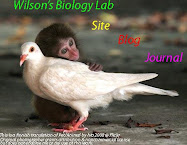And, it appears that one may have been found. Called FMP2.1/ASO2A, this vaccine targets the falciparum malaria strain, the most common and deadliest strain. How it works, is a protein, called AMA-1 affects the virus and causes it to be ineffective or makes it easier for the immune system to defeat – the exact mechanism was not explained. In addition to this protein, an adjuvant system, called ASO2, is utilized to increase immune system response so the immune system is more likely, and better able, to produce the antibodies that will fight of later infections. The vaccine is currently being used tested on a larger scale, from 100 children to 400 children and thus far there have been no adverse effects.
There are, however, some problems with this vaccine. First, it treats only one specific strain. While this is a big step, and researchers are hopeful it will be effective against other strains, these other strains are killing people as well and this vaccine may not help them. Also, malaria is a parasite, which means it does not behave like a disease caused by a virus or bacterium. Unlike many of these diseases, when symptoms of malaria abate, the parasite is still in the victim’s body and relapses occur. What happens to people who survive the first time, is their immune system develops an immunity to the disease which lessens the severity of these relapses. Decreasing the severity of the relapses is what this vaccine attempts to duplicate. The problem with this approach, is that if the parasite is genetically altered in anyway, it is still in the victims body and the changes will affect the victim immediately, rather than on the off chance they get bitten by a mosquito with the altered parasite.
University of Maryland Medical Center. "New Malaria Vaccine Is Safe and Protective in Children, Scientists Find." ScienceDaily 6 February 2010. 10 February 2010
Disease Malaria Presentation
View more presentations from Student Wilsonsbiologylab.





This article is very useful because it lets people know that malaria is another deadly disease that people do suffer from, so it requires no less attention than other diseases.
ReplyDelete